Given right triangle XYZ with altitude WZ, let WY = 10 cm and XY = 13 cm. Find the
length of WZ.
A.5.4
B.11.4
C.7.3
D.3
Answers
Related Questions
Someone!!!!
I will mark the person who answers with an actual answer brainliest
Please help!!!
Due soon

Answers
Answer: Just use a calculator.
Step-by-step explanation:
MathWiz wya boo??.......

Answers
Answer:
i dont see angle S
Step-by-step explanation:
Answer:
108
Step-by-step explanation:
3x + 12 + 5x + 8=180
8x + 20= 180
8x= 160
x= 20
Angle S:
5x + 8
5(20) + 8
100 + 8
108
100 points Due Tomorrow 1. How much will a principal of $2000 become after 5 years in an account with an 8% interest rate compounded quarterly?
Answers
Answer:
Step-by-step explanation:

Given the following equation, solve for r.
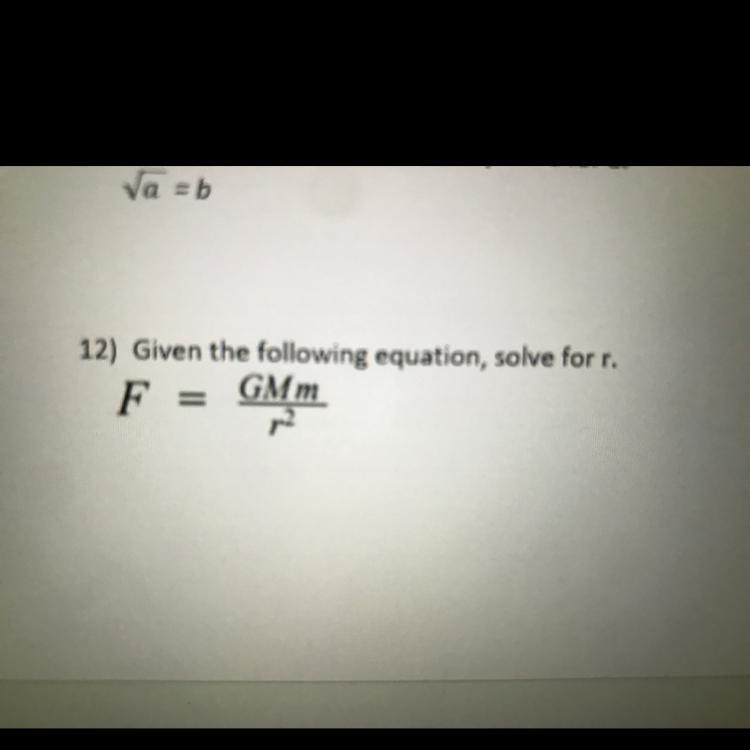
Answers
Step-by-step explanation:
I try my best I not a math expert
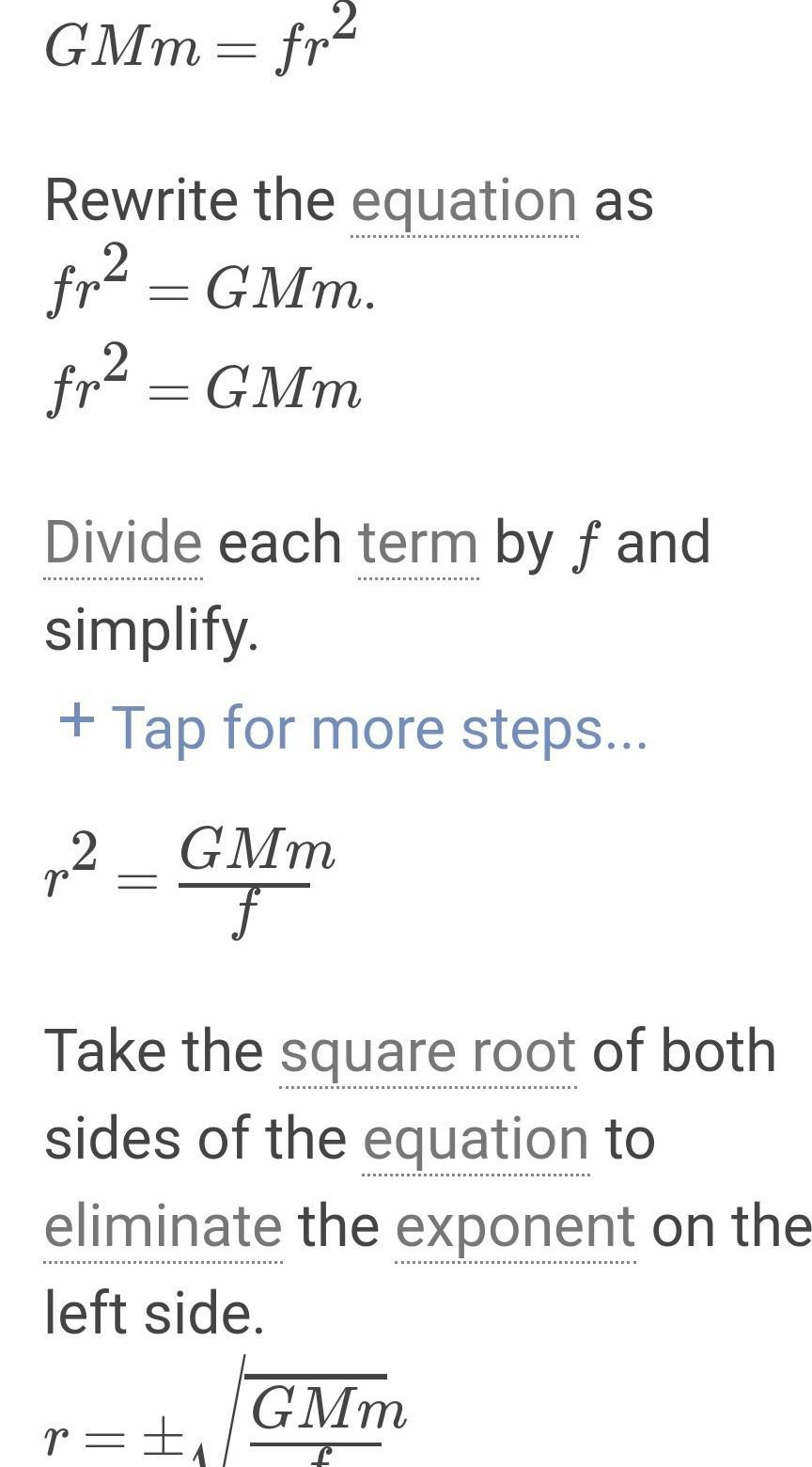
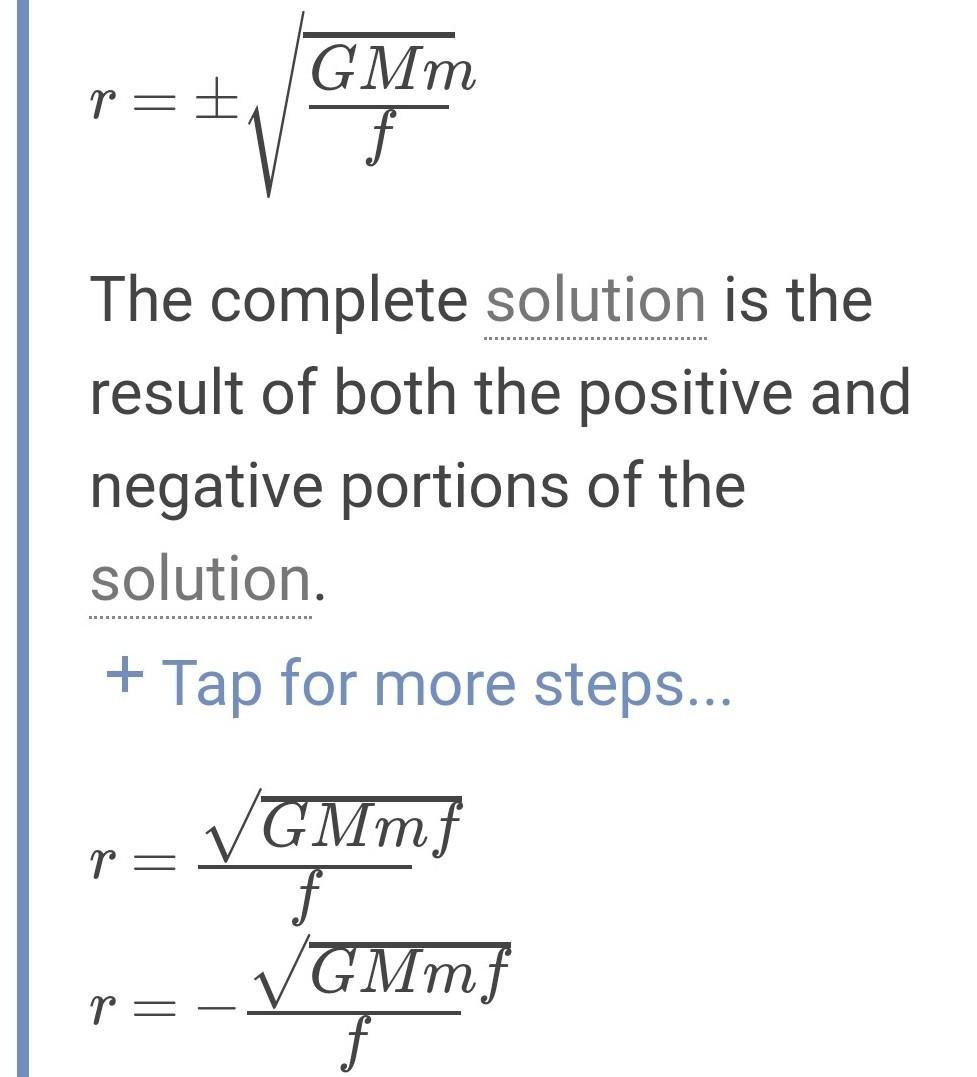
Marcie borrowed $18,000 for a car for 5 years at apr of 8.75% what will her monthly payment will be
Answers
Marcie's monthly payment will be $360.88.
To calculate the monthly payment, we can use the formula for the present value of an annuity:
PV = Pmt [(1 - (1 + r)⁻ⁿ) / r]
where PV is the present value of the loan, Pmt is the monthly payment, r is the monthly interest rate, and n is the number of months.
First, we need to convert the annual interest rate to a monthly rate:
r = 0.0875 / 12 = 0.007292
Next, we need to calculate the total number of payments:
n = 5 x 12 = 60
Now, we can solve for Pmt:
PV = 18000
Pmt = PV x r / (1 - (1 + r)⁻ⁿ)
Pmt = 360.88
Therefore, Marcie's monthly payment will be $360.88.
Learn more about Monthly Payment here:
https://brainly.com/question/29315856
#SPJ1
Hakeem and his children went into a grocery store and he bought $11.60 worth of apples and bananas. each apple costs $1 and each banana costs $0.90. he bought twice as many apples as bananas. determine the number of apples and the number of bananas that hakeem bought.
Answers
Hakeem bought 8 apples and 4 bananas worth 11.60 at the grocery store.
Let's assume the number of bananas that Hakeem bought is x.
Since Hakeem bought twice as many apples as bananas, the number of apples he bought would be 2x.
The cost of each apple is 1, so the total cost of apples would be 2x dollars.
The cost of each banana is 0.90, so the total cost of bananas would be 0.9x dollars.
According to the given information, the total cost of apples and bananas is
\($11.60.\)
Therefore, we can set up the equation:
2x + 0.9x = 11.60
Combining like terms:
2.9x = 11.60
Dividing both sides by 2.9:
x = 11.60 / 2.9
x = 4
Hence, Hakeem bought 4 bananas and twice as many apples, which would be
2 (4) = 8 apples.
To know more about arithmetic, visit:
https://brainly.com/question/29926163
#SPJ11
Hakeem bought 8 apples and 4 bananas worth 11.60 at the grocery store.
Let's assume the number of bananas that Hakeem bought is x.
Since Hakeem bought twice as many apples as bananas, the number of apples he bought would be 2x.
The cost of each apple is 1, so the total cost of apples would be 2x dollars.
The cost of each banana is 0.90, so the total cost of bananas would be 0.9x dollars.
According to the given information, the total cost of apples and bananas is 11.60.
Therefore, we can set up the equation:
2x + 0.9x = 11.60
Combining like terms:
2.9x = 11.60
Dividing both sides by 2.9:
x = 11.60 / 2.9
x = 4
Hence, Hakeem bought 4 bananas and twice as many apples, which would be.
2 (4) = 8 apples.
To know more about Hakeem bought 8 apples and 4 bananas worth 11.60 at the grocery store.
Therefore, we can set up the equation:
2x + 0.9x = 11.60.
To know more about grocery store, visit:
brainly.com/question/29926163
#SPJ11
Find the surface area or volume of each rectangular prism. (Show work pls)

Answers
Answer:
496 in.²
346 mm²
880 in.²
168 cm³
960 m³
420 yd³
Step-by-step explanation:
SA = 2(wl + hl + hw)
SA = 2 · (8 · 16 + 5 · 16 + 5 · 8)
SA = 496
SA = 2(wl + hl + hw)
SA = 2 · (5 · 13 + 6 · 13 + 6 · 5)
SA = 346
SA = 2(wl + hl + hw)
SA = 2 · (4 · 20 + 15 · 20 + 15 · 4)
SA = 880
V = whl
V = 4 · 7 · 6
V = 168
V = whl
V = 10 · 8 · 12
V = 960
V = whl
V = 14 · 3 · 10
V = 420
The regular price of a camera is $180.00. The camera is on sale for 25% off the regular price.
What is the sale price of the camera in dollars and cents?
Answers
Answer:
o
Step-by-step explanatioon:
The image of the point (-1, -1)(under a translation is (4, 4)( Find the coordinates of the image of the point (-6, 5) under the same translation.
Answers
to get from (-1,-1) to (4,4) you go right 5 and up 5. Or just adding 5 to both -1s. Doing the same to (-6,5) gives you (-1,10)
The coordinates are (-1, 10).
What is translation?A translation in math moves a shape left or right and/or up or down. The translated shapes look exactly the same size as the original shape, and hence the shapes are congruent to each other. They just have been shifted in one or more directions. Since it is just moving of the shape from one place to other, there is no change in the shape.
Translation is one of the transformations in math. When a shape has been transformed, the original shape is called the preimage and the vertices are usually labeled using uppercase letters (Example: ABCD). The translated shape is called the image and the vertices are labeled using uppercase letters with a “prime” next to each (Example: A′B′C′D′, and is pronounced “A-prime, B-prime, C-prime, D-prime”).
Given:
the point is (-8, 3) whose image point is (-5, 2)
The difference between the coordinates of the image and the coordinates of the original is the same for both points.
X - (-6, 5) = (4, 4) -(-1, -1)
X = (4, 4) -(-1, -1) +(-6, 5) = (4+1-6, 4+1+5)
X = (-1, 10)
Hence, the point is (-1, 10)
Learn more about translation here:
https://brainly.com/question/12463306
#SPJ5
wednesday homework5 of 55 of 5 itemsquestionpossible points: 20a loaf of bread weighs 454 grams. how much would 3 loaves of bread weigh?responses1,364 grams1,364 grams1,632 grams1,632 grams1,362 grams1,362 grams1,327 grams1,327 gramsskip to navigation
Answers
Using unitary method, the weight of 3 loves of bread = 1362 grams
The correct answer is an option (c)
Let us assume that m represents the weight of a loaf of bread.
Here, a loaf of bread weighs 454 grams.
So, the value of m = 454 grams
We need to find the weight of 3 loves of bread.
Let us assume that n represents the weight of 3 loves of bread.
Using unitary method the weight of 3 loves of bread would be,
⇒ n = 3 × m
⇒ n = 3 × 454
⇒ n = 1362 grams
Therefore, the weight of 3 loves of bread would be 1362 grams
The correct answer is an option (c)
Learn more about the unitary method here:
https://brainly.com/question/28276953
#SPJ4
The complete question is:
A loaf of bread weighs 454 grams. how much would 3 loaves of bread weigh?
a) 1,364 grams
b) 1,632 grams
c) 1,362 grams
d) 1,327 grams
Every day, you take the elevator from the basement parking lot that is at level -3. The elevator takes two seconds per level and you find that it takes 46 seconds to reach your floor. Which floor do you live on?
Answers
Answer: Well 2 x 23 = 46, So the 23rd floor
Step-by-step explanation: :)
WILL GIVE BRAINLIEST
What is an equation of the line that passes through the points (6,2) and
(-6,-8)? Put your answer in fully reduced form.
Answers
════════ ∘◦❁◦∘ ════════
Answer : y = ⅚x - 3════════════════════
Knownx1 = 6
y1 = 2
x2 = (-6)
y2 = (-8)
════════════════════
QuestionEquation of the line (y = mx + c)
════════════════════
Way to do#First, you find the gradient (m)
\(m = \frac{y2 - y1}{x2 - x1} = \frac{(( - 8) - 2)}{(( - 6) - 6)} = \frac{( - 10)}{( - 12)} = \frac{5}{6} \)
#Now use the formula of equation of the line
y - y1 = m(x - x1)
y - 2 = ⅚(x - 6)
y - 2 = ⅚x - 5
y = ⅚x - 5+2
y = ⅚x - 3
════════════════════
What is the value of x?
O 6
6V3
12
O 12
o
12V3
60°

Answers
Answer:
The answer is 12V3 60°
Hope I help you
The length of a table is three times as long as its width. The width of the table is 5x+2.
What is an algebraic expression for the length of the table? (Hint: Use the Distributive Property.)
EXPLAIN the steps that you took to find your answer.
Answers
Answer:
length = 15x + 6
Step-by-step explanation:
given the length is 3 times the width, then
length = 3(5x + 2) ← distribute parenthesis by 3
= 15x + 6
Find the coordinates for the equation.
{y=-x^2+5
{-x+y=3
Answers
Answer:
I hope you will get help from these...
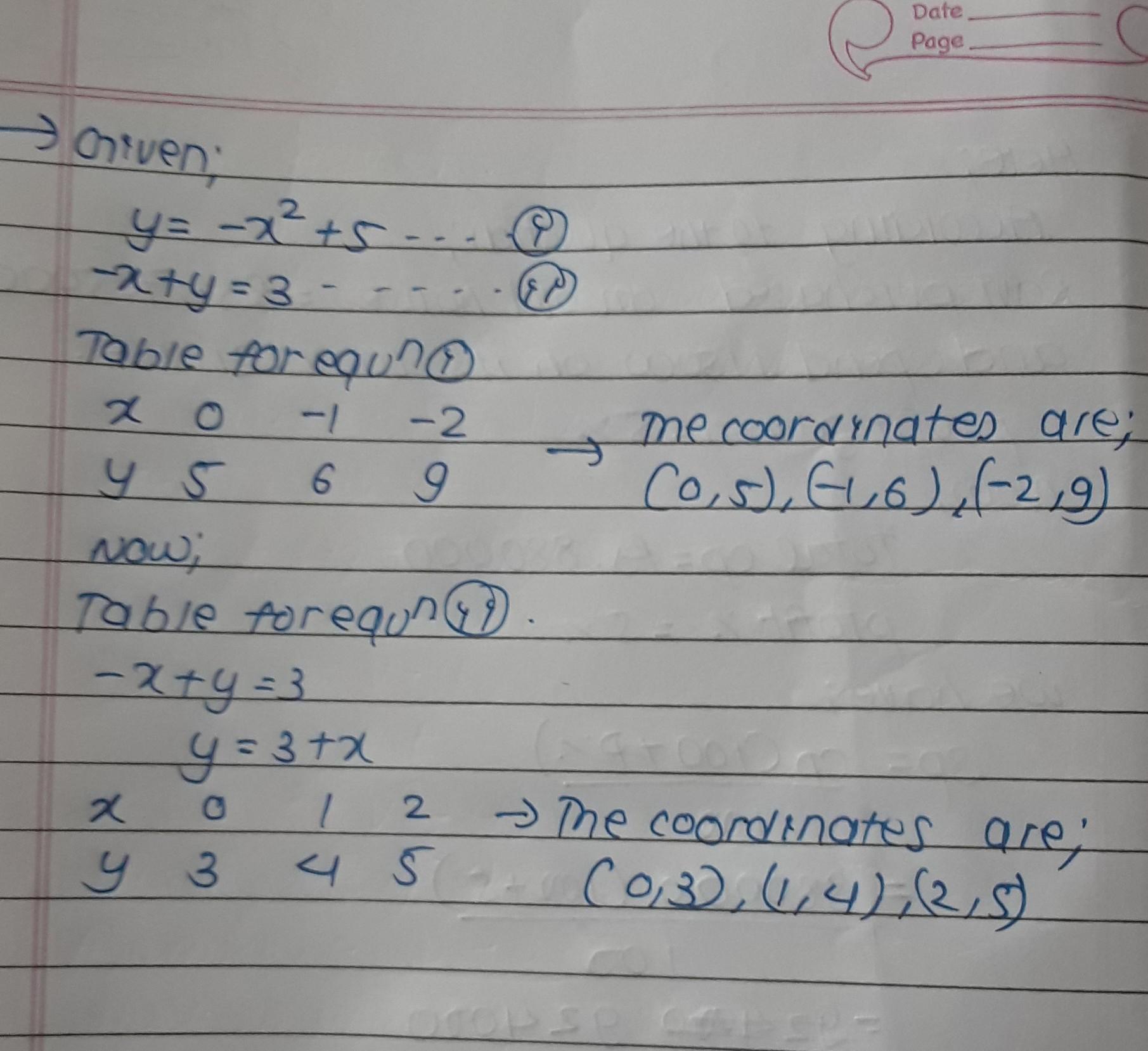
If the graph of the function y=h(x) contains the point (5,-4) then which of the following must be true
Answers
Answer:
h (5) = -4 .........
Please help with answer!
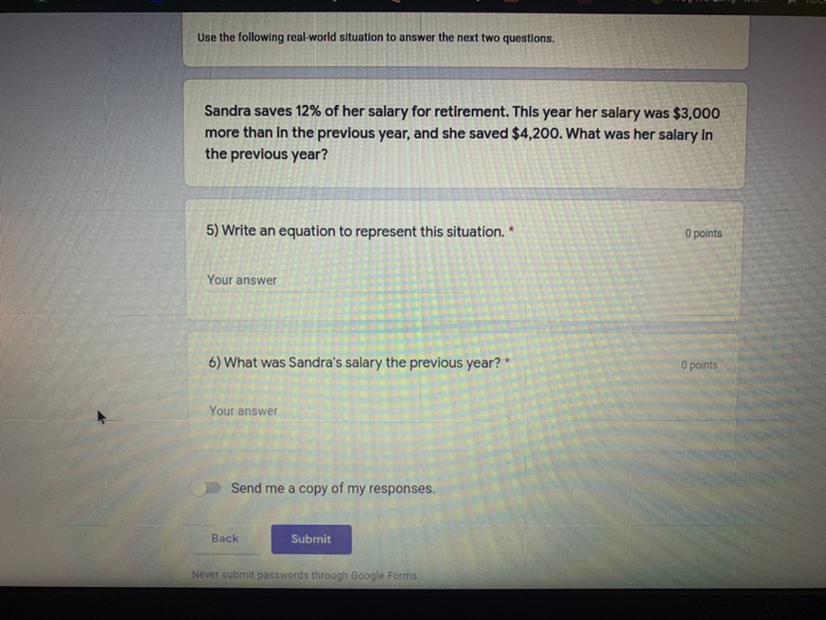
Answers
Answer:
0.12 x (x + 3000) = 4200
equation for her salary last year : last year's salary = (4200 / 0.12) - 3000
$32,000
Step-by-step explanation:
Let x = last year's salary
this year's salary = 3000 + x
this equation can be used to determine how much she saved this year = 0.12 x (x + 3000) = 4200
to find last year's salary, make x the subject of the formula
4200 / 0.12 - 3000 = x
x = $32,000
when the coin is 10cm (or further!) from the center of the turntable, it slides off. find the coeffic
Answers
The coefficient of static friction between the coin and the turntable is 0.085.
(a) The centripetal force required to keep the coin moving in a circular path is provided by the force of static friction between the coin and the turntable.
When the coin is stationary relative to the turntable, the centripetal force is equal to the maximum static friction force.
The centripetal force is given by:
\(\(F_c = \frac{mv^2}{r}\)\)
In this case, the coin is stationary relative to the turntable, so the centripetal force is equal to the maximum static friction force:
\(\(F_c = f_{\text{static max}}\)\)
Therefore, we can write:
\(\(f_{\text{static max}} = \frac{mv^2}{r}\)\)
(b) The maximum static friction force can be expressed as:
\(\(f_{\text{static max}} = \mu_{\text{static}} \cdot N\)\)
Where:
\(\(f_{\text{static max}}\)\) is the maximum static friction force,
\(\(\mu_{\text{static}}\)\) is the coefficient of static friction, and
\(\(N\)\) is the normal force.
Since the coin is on a horizontal surface, the normal force \(N\) is equal to the weight of the coin, which is \(mg\), where \(g\) is the acceleration due to gravity.
Setting the equations for the maximum static friction force equal to each other, we have:
\(\(\frac{mv^2}{r} = \mu_{\text{static}} \cdot mg\)\)
Simplifying, we can solve for the coefficient of static friction:
\(\(\mu_{\text{static}} = \frac{v^2}{rg}\)\)
Now substitute
v = 50.0
r = 30.0 cm
g = 9.8 m/s²
Now we can calculate the coefficient of static friction:
\(\(\mu_{\text{static}} = \frac{(0.5 \, \text{m/s})^2}{(0.3 \, \text{m})(9.8 \, \text{m/s}^2)}\)\)
= 0.085
Therefore, the coefficient of static friction between the coin and the turntable is approximately 0.085.
Learn more about Friction here:
https://brainly.com/question/28356847
#SPJ4
The question attached here seems to be incomplete, the complete question is:
A coin placed 30.0cm from the center of a rotating, horizontal turntable slips when its speed is 50.0cm/s.
(a) What force causes the centripetal acceleration when the coin is stationary relative to the turntable? (b) What is the coefficient of static friction between coin and turntable?
A carpenter cuts a circle out of a piece of wood. The radius of the circle is
about 23 inches. The carpenter cuts the circle into two semicircles. What is
the area of one semicircle to the nearest hundredth? Use 3.14 for
Answers
Answer:
830.53 in²
Step-by-step explanation:
To find the area of one semicircle, find the area of the full circle and divide it by 2:
Use the circle area formula, A = \(\pi\)r²
Plug in 3.14 as pi, and plug in the radius:
A = \(\pi\)r²
A = 3.14(23²)
A = 1661.06
Divide this by 2:
1661.06 / 2
= 830.53
So, the area of one semicircle is 830.53 in²
Answer:
850.53 in² is the answer
HELPPPPPP! WILL GIVE THE BRAINLIEST ANSWER
Factorise these expressions as far as possible.
5a² + 4ab =
6p - pq - 5pr =
8st +9su + 7sv =
8pq² +9qr+ 7pqr =
2a²b + ab² - 6ab =
6t2u² +8tu²y + 5tuw =
18abc²-42a²bc + 18ab²c =
24pqrs +56q²rs - 40qrs =

Answers
Answer:
5a² + 4ab = a(5a+4b)
6p - pq - 5pr = p(6-q-5r)
8st +9su + 7sv = s(8t+9u+7v)
8pq² +9qr+ 7pqr = q(8p²+7pr+9r)
2a²b + ab² - 6ab = ab(2a+b-6)
6t²u +8tu²y + 5tuw = tu(6t+8uy+5w)
18abc²-42a²bc + 18ab²c = 6abc(3c-7a+3b)
24pqrs +56q²rs - 40qrs = 8qrs(3p+7q-5)
Determine whether the triangles can be proved similar. If they are similar, write a similarity statement and explain how you know they are similar. If they are not similar, explain why.

Answers
The proof of similar triangles are;
1) Triangles ABC and EFG are not similar triangles.
2) Both triangles are similar triangles by AA Similarity Postulate
How to identify similar triangles?Similar triangles are defined as triangles that have the same shape, but then their sizes may vary. Now, all equilateral triangles, squares of any side lengths are examples of similar objects. This means that, if two triangles are similar, then we can say that their corresponding angles are congruent and corresponding sides are in equal proportion.
1) Triangles ABC and EFG are not similar because none of the corresponding angles nor corresponding sides are congruent to themselves.
2) Looking at both triangles formed, we can say that;
∠JLK ≅ ∠JMN by alternate angles postulate
∠JNM ≅ ∠JKL by alternate angles postulate
Similarly ∠J is congruent to itself by Reflexive property and as such both triangles are similar by AA Similarity postulate.
Read more about Similar Triangles at; https://brainly.com/question/14285697
#SPJ1
PLEASE HELP FAST! 35 PTS!!
Justify each step by identifying the property used.
\(t+5(t+1)=t+(5t+5)\)
\(=(t+5t)+5\)
\(=(1t+5t)+5\)
\(=(1+5)t+5\)
\(=(6t+5)\)
Answers
The algebraic properties used in the steps are the distribution property, the associative property, the identity property, and the distribution property
How to justify each step by identifying the property used?The first step in the equation is given as:
t + 5(t + 1) = t + (5t + 5)
The distribution property states that
a(b + c) = ab + ac
So, the property used in t + 5(t + 1) = t + (5t + 5) is the distribution property
Next, we have:
t + 5(t + 1) = (t + 5t) + 5
The associative property states that
a + (b + c) = (a + b) + c
So, the property used in t + 5(t + 1) = (t + 5t) + 5 is the associative property
Next, we have:
t + 5(t + 1) = (1t + 5t) + 5
The identity property states that
a * 1 = a
So, the property used in t + 5(t + 1) = (1t + 5t) + 5 is the identity property
Next, we have:
t + 5(t + 1) = (1 + 5)t + 5
The distribution property states that
a(b + c) = ab + ac
So, the property used in t + 5(t + 1) = (1 + 5)t + 5 is the distribution property
Lastly, we have the solution
(6t + 5)
Read more about algebraic properties at:
https://brainly.com/question/855307
#SPJ1
Your startup (Silicon Valley Spaghetti) is pioneering a new process for making pasta. A piece starts in machine A with probability 12 and in machine B with probability 12. The initial length of the piece is a random variable X. If the piece starts in machine A, X has a uniform distribution on [0,1]. If the piece starts in machine B. X has a uniform distribution on (0,2). The piece then enters the stretching machine, resulting in final length Y which is uniformly distributed on [X, X +1]. Draw two sketches: 1. A graph of the joint distribution of X and Y, conditional on machine A being selected. 2. A graph of the joint distribution of X and Y, conditional on machine B being selected. You do not need to draw 3-dimensional plots. It is sufficient to draw the support of each joint distribution in the X-Y plane. If the piece has final length less than 1, what is the conditional probability that it came from machine A? |
Answers
The final length of the piece is less than 1 if Y < 1. We know that if Y < 1, then X + 1 < 1 or X < 0. Since X is not negative, this implies that X = 0. Thus, if the final length of the piece is less than 1, the only possibility is that it came from machine A.
Silicon Valley Spaghetti is a new start-up company pioneering a new pasta-making process. The piece starts in machine A with probability 1/2 and in machine B with probability 1/2. X is a random variable that represents the initial length of the piece. The conditional probability of X is determined by the machine that the piece starts with. The distribution of X is a uniform distribution on the interval [0, 1] when the piece starts in machine A and a uniform distribution on the interval (0, 2) when it starts in machine B. When the piece enters the stretching machine, it results in the final length Y. Y is uniformly distributed over the interval [X, X +1]. Graph of the joint distribution of X and Y, conditional on machine A being selected: In this case, the piece starts in machine A, so the graph of the joint distribution of X and Y, conditional on machine A being selected is as follows:
Graph of the joint distribution of X and Y, conditional on machine B being selected: In this case, the piece starts in machine B, so the graph of the joint distribution of X and Y, conditional on machine B being selected is as follows:
The final length of the piece is less than 1 if Y < 1. We know that if Y < 1, then X + 1 < 1 or X < 0. Since X is not negative, this implies that X = 0. Thus, if the final length of the piece is less than 1, the only possibility is that it came from machine A. Therefore, the conditional probability that it came from machine A is 1.
know more about joint distribution
https://brainly.com/question/32472719
#SPJ11
How do you find the measure of an angle in a triangle isosceles?
Answers
To find the measure of an angle in a triangle that is isosceles, you can use the fact that the two equal sides of the triangle are congruent to each other. The measure of each of these angles can be found by subtracting the measure of the third angle from 180 degrees.
Determine which two sides of the triangle are equal in length (these are called the "congruent sides").
Find the measure of the angle opposite one of the congruent sides. This angle is called the "base angle."
Subtract the measure of the base angle from 180 degrees. This will give you the measure of the other two angles in the triangle (since the three angles in any triangle must add up to 180 degrees).
For example, if the measure of the base angle is x degrees, then the measure of the other two angles would be (180-x) degrees.
To know more about triangle click below:
https://brainly.com/question/2773823#
#SPJ4
The measure of angles in an isosceles triangle can be found using the Triangle Angle Sum Theorem. This theorem states that the sum of the angles in any triangle is 180 degrees. Therefore, if you know two of the angles in the triangle, you can find the third angle by subtracting the sum of the two known angles from 180.
To find the measure of an angle in a triangle isosceles, you can use the Triangle Angle Sum Theorem. This theorem states that the sum of the angles in any triangle is 180 degrees. Therefore, if you know two of the angles in the triangle, you can find the third angle by subtracting the sum of the two known angles from 180.
Let's look at an example. Suppose you have an isosceles triangle and you know that two of its angles measure 50 degrees and 60 degrees. To find the measure of the third angle, you would subtract 110 (the sum of the two known angles) from 180. This gives you 70 degrees as the measure of the third angle.
In addition to the Triangle Angle Sum Theorem, you can also use the Isosceles Triangle Theorem to find the measure of an angle in an isosceles triangle. The Isosceles Triangle Theorem states that the angles opposite the two equal sides of an isosceles triangle are equal. This means that if you know one of the angles in the triangle, you can determine the measure of the other two angles, since they will both be equal to the measure of the known angle.
Learn more about isosceles triangle here
https://brainly.com/question/2456591
#SPJ4
PLEASE HELP NOW WILL MARK BRAINLEST FOR CORRECT ANSWER A Brazilian town near the Amazon River has experienced 7% annual decrease in size of rainforest as trees are cut down and forest is converted to farmland. In the year 2009, there were about 28,000 acres of rainforest in town. a. Write an exponential model that relates the number of acres of rainforest y as a function of t years since 2009. b. How many acres of rainforest remained in 2013 (that is, in year 4)? Show work.
Answers
Answer:
a. y = 28,000×(1 - 0.07)^t
b. 20,945.46 acres
Step-by-step explanation:
a. The annual percentage decrease in in size of rainforest = 7%
The size of the rainforest in 2009 = 28,000 acres
The exponential decay formula is y = C×(1 - r)^t
Where:
y = Final Amount
C = Initial amount = 28,000 acres
r = Rate of Change = 0.07
t = Time
Which gives;
y = 28,000×(1 - 0.07)^t
b. In 2013 (year 4, t = 4), the amount of rainforest remaining is therefore;
y = 28,000×(1 - 0.07)^(4) = 28,000×0.93^4 = 20,945.46 acres
The size of the rainforest that remained in 2013 is 20,945.46 acres.
Answer:
20(-3)
Step-by-step explanation:
Examine the graph and the map.
On the left, a bar graph titled Deforestation Trend in the Amazon Rainforest. The x-axis is labeled Acres in kilometers squared of Rainforest Lost. The y-axis is labeled Year from 2004 to 2016. 2004 lost 27,772 acres. 2005 lost 19,014 acres. 2010 lost 7,000 acres. 2012 lost 4.571 acres. 2016 lost 7,989 acres. On the right, a map titled Deforestation of the Amazon Rainforest by 2016. The Amazon River is labeled. A key notes deforestation by 2016, amazon forest in 2016, and non-forest vegetation. Labeled clockwise are Roraima, Amapá, Maranhäo, Pará, Tocantins, Mato Grosso, Rondônia, Acre, and Amazonas. Acre, Amazonas, Roraima, Amapá, Maranhäo, Mato Grosso and Rondônia are deforested by 2016. Pará, Maranhäo, Tocantins, Mato Grosso, and Rondônia have the Amazon forest in 2016. Mato Grosso, Tocantins and Maranhäo have majority of non-forest vegetation.
Which is the best conclusion about the Amazon rainforest that can be drawn from these sources?
Deforestation in the Amazon has accelerated since 2004.
Deforestation in the Amazon is no longer an important issue.
Despite population growth, the Amazon rainforest is increasing in size.
Despite positive trends, the Amazon rainforest remains in danger of destruction.
Write 1.1x 10-4 in standard form.
Write 2.52 x 10-5 in standard form.
Write 6.25 x 105 in standard form.
Write 4.857x 10 in standard form.
Answers
Answer:
Glad to help..
Step-by-step explanation:
1) 1.1×10-4 standard form- 7
2) 2.52×10-5 standard form- 20.2
3) 6.25×105 standard form- 656.25
4) 4.857×10 standard form- 48.57
4x + 3 Y = 11
Me podrían ayudar por favor a resolverla
Answers
Answer:
x = 2
y = 1
Step-by-step explanation:
4 x 2 = 8
3 x 1 = 3
8 + 3 = 11
So therefore
x = 2
y = 1
Have a nice day :)
Spanish:
Responder:
x = 2
y = 1
Explicación paso a paso:
4 x 2 = 8
3 x 1 = 3
8 + 3 = 11
Asi que, por lo tanto
x = 2
y = 1
Que tenga un buen día :)
when using a one-way within-groups anova the variablilty due to individual differences is reduced resulting in a
Answers
When using a one-way within-groups ANOVA, the variability due to individual differences is reduced, resulting in a more accurate assessment of the effect of the independent variable on the dependent variable.
How to use an ANOVATo minimize the variation between individuals, their scores are evaluated within the same group rather than comparing them across different groups.
The within-groups ANOVA method utilizes identical individuals in different conditions or treatments to counteract personal variances, thereby enabling a more accurate measurement of the independent variable's impact.
By adopting this method, the analysis gains greater statistical strength, resulting in a more heightened aptitude to identify genuine effects of the independent factor on the dependent element.
Learn more about ANOVA at: https://brainly.com/question/25800044
#SPJ1
What are all the exact solutions of 2 sin?x- sinx= 0 for osx52x ? Give your answer in radians.
5x
5 and 6
O 05and
55
6
O and
x
* 3x
5x
3
3 2 2
ou
te
5x
6
记
and 25
Answers
The equation can only have a solution if 2 < sin(5x/2 - x/2) or sin(5x/2 - x/2) < -2.
First, let's simplify the equation by using the identity sin A - sin B = 2 cos((A+B)/2)sin((A-B)/2). Applying this identity, we get:
sin(5x/2 - x/2) = 2 cos(3x/2)sin(x/2)
Next, we can use the fact that -1 ≤ sin(x) ≤ 1 for any angle x to obtain:
-2 ≤ 2 cos(3x/2)sin(x/2) ≤ 2
However, neither of these inequalities has a solution since the range of the sine function is [-1, 1]. Therefore, the equation has no solutions in the interval [0, 2π].
To know more about equation here
https://brainly.com/question/21835898
#SPJ4
Complete Question:
The number of solutions of the equation sin 5x/2 − sin x/2 = 2 in [0,2π] is
Please help me I need help
If the diameter of a circle is doubled, the circumference of the new circle is..
A. 1/4 of the circumference of the original circle
B. 1/2 of the circumference of the original circle
C. The same as the circumference as the original circle
D. 2 times the circumference of the original circle
E. 4 times the circumference of the original circle
Answers
Answer:
D
Step-by-step explanation:
Let's call the original diameter x. Then, the circumference would be xπ. If the diameter is 2x, the circumference is 2xπ. 2xπ / xπ = 2 so the answer is D.
Answer:
D. 2 times the circumference of the original circle
Step-by-step explanation:
The circumference of a circle is represented by the formula C = 2(r)pi (where is r is the radius), which can also be written as C = (d)pi, where d is the diameter, (since 2r is equivalent to d). If the diameter is doubled, the original equation can be rewritten as C = 2(d)pi. Therefore, the circumference of the new circle is double the original circle.
You can plug in a sample number to further prove this point. Pretend r = 3 so d = 6. C = 6pi. Now when the diameter is doubled, d = 12 and C = 12pi which is double 6pi.
So the answer is D. 2 times the circumference of the original circle